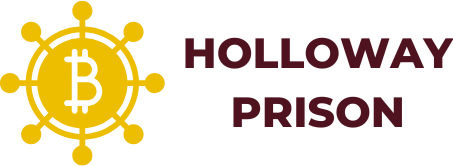In a world where money seems to slip through fingers like sand, mastering the art of money organization is more crucial than ever. Imagine a life where bills don’t pile up like laundry and your budget doesn’t resemble a game of Jenga. With a few clever hacks, it’s possible to transform financial chaos into a well-oiled machine that even your accountant would envy.
From quirky apps that make tracking expenses feel like a game to simple tricks that’ll have you sorting receipts faster than you can say “tax season,” these money organization hacks are here to save the day. Say goodbye to financial stress and hello to a wallet that’s not just full of receipts but also brimming with potential. Get ready to take control of your finances and unlock the secret to a more organized, stress-free financial life.
Table of Contents
ToggleEffective Budgeting Techniques
Effective budgeting techniques provide structure and clarity to personal finances. Utilizing strategic methods can simplify financial management and enhance control over expenses.
Zero-Based Budgeting
Zero-based budgeting requires allocating every dollar of income to expenses, savings, or debt repayment. This method encourages individuals to justify all spending, resulting in a clear financial picture. Start by listing all income sources, then categorize required expenses such as housing, food, and utilities. After accounting for necessities, assign remaining funds to savings goals and discretionary spending. This comprehensive approach ensures that funds are used intentionally, promoting mindfulness in spending habits.
50/30/20 Rule
The 50/30/20 rule divides after-tax income into three categories: needs, wants, and savings. Allocate 50% for needs like housing and transportation, ensuring essential expenses are covered first. Next, assign 30% for wants, which can include dining and entertainment. Finally, designate 20% for savings and debt repayment, fostering long-term financial stability. By following this straightforward framework, individuals maintain a balanced approach to spending while prioritizing both immediate enjoyment and future financial health.
Tools for Money Organization
Effective tools simplify money organization, making budgeting and expense tracking straightforward. Various options cater to different preferences.
Budgeting Apps
Budgeting apps streamline financial management. Apps like Mint, YNAB (You Need a Budget), and EveryDollar assist users in tracking expenses, setting saving goals, and managing budgets. Mint automatically categorizes transactions, providing visual summaries of spending habits. YNAB emphasizes proactive budgeting by allocating each dollar to a specific purpose. EveryDollar offers an easy drag-and-drop interface that enhances budget adjustments. Many users appreciate the real-time updates and notifications, ensuring they stay on track.
Spreadsheets
Spreadsheets offer flexibility in financial planning. Programs like Microsoft Excel and Google Sheets allow users to create personalized budgets and expense trackers. Users can customize templates to fit specific needs, making the organization straightforward. Formulas enable automatic calculations for totals, averages, and other financial data. Moreover, collaboration features in Google Sheets facilitate shared budgeting efforts among family members or partners. Excel’s robust functions allow for detailed analysis of spending habits over time. Overall, spreadsheets empower users with control over their financial landscape.
Practical Money-Saving Tips
Effective money-saving strategies empower individuals to optimize their finances efficiently. Below are practical tips tailored for maximum savings.
Meal Planning
Meal planning simplifies grocery shopping while reducing food waste. When individuals outline meal ideas for the week, they create focused shopping lists, leading to fewer impulse buys. Cooking at home saves significant money compared to dining out. Preparing larger portions for lunches or dinners can increase savings further. Many find that choosing seasonal produce not only enhances meals but also lowers costs. Utilizing coupons and promotional discounts can also maximize savings on groceries. Overall, strategizing meals translates into a healthier diet and a healthier wallet.
Automatic Savings
Automatic savings take the effort out of financial management. By setting up automatic transfers from checking to savings accounts, individuals consistently set money aside. This method ensures that savings grow without requiring constant attention. Many banks provide this feature, allowing users to specify transfer amounts and dates. Consider designating a specific percentage of every paycheck for savings. This practice fosters a habit of saving while minimizing the temptation to spend. Consequently, automatic savings contribute significantly to achieving both short-term and long-term financial goals.
Setting Financial Goals
Setting financial goals provides direction and motivation for managing money effectively. Goals can range from immediate targets to ambitious long-term objectives.
Short-Term Goals
Short-term goals focus on immediate financial needs and desires, typically within a year. Common examples include saving for a vacation, paying off credit card debt, or building an emergency fund. Establishing specific dollar amounts for these targets enhances accountability. Creating timelines for achieving each goal maintains urgency and encourages consistent progress. Tracking progress regularly ensures these goals remain relevant and motivates continued effort. Short-term financial successes pave the way for more significant achievements.
Long-Term Goals
Long-term goals involve plans lasting several years or decades. Focus often includes retirement savings, funding education, or purchasing a home. A clear vision helps frame these objectives, whether it’s achieving a specific retirement account balance or saving for a child’s college fund. Crafting an investment strategy tailored to these goals enhances growth potential and aligns resources accordingly. It’s essential to review and adjust these plans regularly, accommodating lifestyle changes and market conditions. Consistent dedication leads to lasting financial success and stability.
Mastering money organization is a journey that can lead to financial peace and empowerment. By implementing the hacks and tools discussed, individuals can streamline their budgeting and enhance their overall financial health. Whether it’s utilizing budgeting apps or adopting effective techniques like zero-based budgeting and the 50/30/20 rule, every step taken brings them closer to financial clarity.
Incorporating practical money-saving strategies and setting clear financial goals also plays a crucial role in this process. As they embrace these practices, individuals will not only reduce stress but also cultivate a more secure financial future. Taking control of finances isn’t just about managing money; it’s about creating a life where financial freedom becomes a reality.





